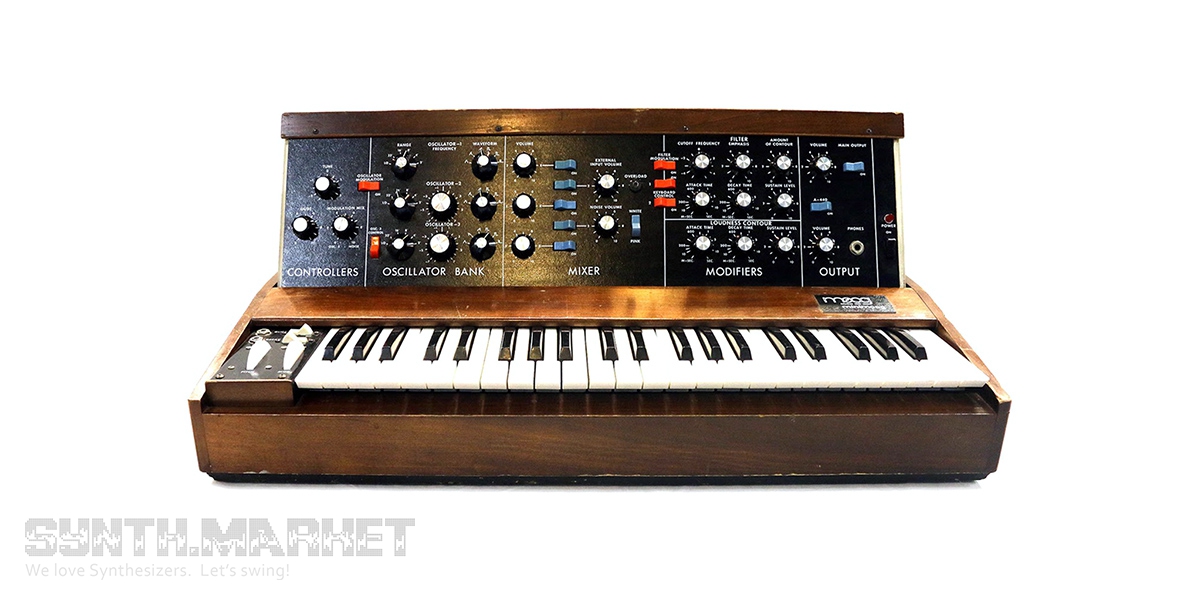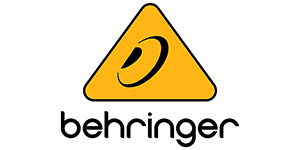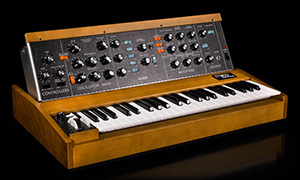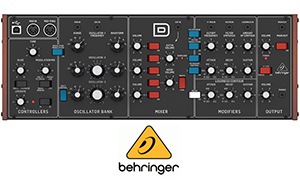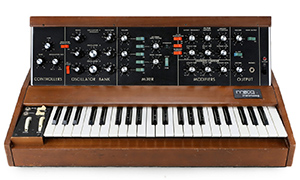Minimoog Model D may be the most classic and never-fading or by no means ever outdated analog synthesizer. This is the first synthesizer, which could be called portable, which allowed a musician to put it to good use not only in the studio, but also on stage.
Previously, synthesizers were custom made and required deep enough technical knowledge to produce sound. Robert Moog built his synthesizer having it based on modular systems, but at the same time he simplified the commutation as much as possible. All the elements featured by the Minimoog control panel are laid out logically and in a comprehensible manner; besides, there is no need to use patch cords - this allowed any musician to just press the key and get the needed sound and it also determined the way the synthesizers looked for decades ahead.
A curious detail: initially it was planned to paint the synthesizer into bright multicolor, but musicians who were asked to test the new device and give some comment on the looks rejected this design and insisted on the "classic" appearance with reference to modular systems.
Before the final version of Minimoog was approved, there were many versions, and it's not even about the A, B, C models ... The model D itself underwent a change and this was due to the VCO. The first release was made at the time when the operational amplifiers only started to be exploited and were quite rare. Voltage-controlled oscillators were built on transistors, the parameters of which were configured manually. Transistor VCOs exerted poor effort to remain stable, the generated frequency constantly deviated. Later the CA3046 chip was used as one of the basic components, which comprised transistor pairs, and a monolith housing provided greater thermal endurance. Operational amplifiers were used in the final versions.
Collectors argue that the different Minimoog VCOs sound in a different way and it can be clearly heard even by someone whose ear is untrained for this, early transistor models sounded brighter and warmer.
Regardless of the revision, the synthesizer had three VCOs that had independent settings and a choice of six different waveforms, as well as a wide range of modulation capabilities. This made it possible to create powerful bass and lead sounds (many claim that this sound has never been excelled by any other synth).
Another legendary element of the system is VCF. Many manufacturers tried to replicate this filter, but to no avail. The filter circuit itself is protected by patent No. 3475623, issued to Robert A. Moog on October 28, 1969.
The list of Minimoog users is very extensive, let's name only a couple of them: Chick Corea, Pink Floyd, Coldplay, Dr. Dre, Gary Numan, Kraftwerk, Michael Jackson, Uriah Heep.






